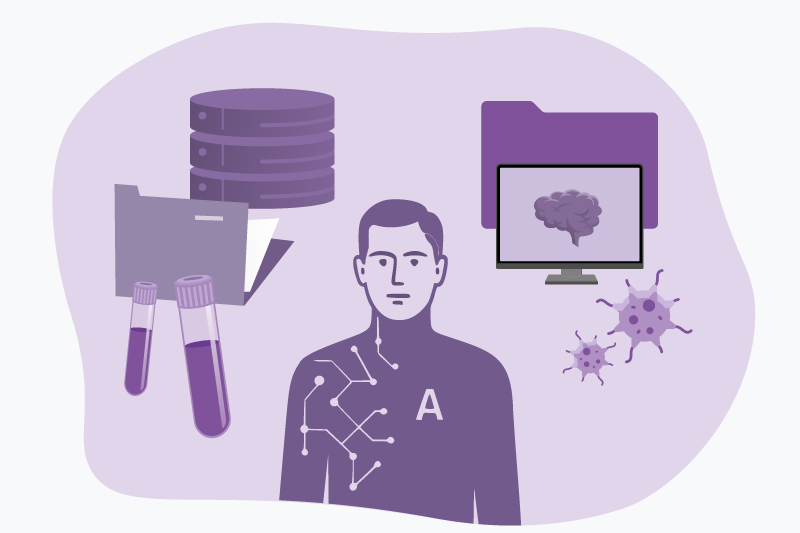Introduction
Laboratory medical analyzes play an important role in medical diagnostics. According to a US study, up to 70% of medical decisions in a hospital, including a patient’s admission, medication and discharge, are influenced by laboratory diagnostics [1].
The Professional Association of German Laboratory Doctors gives similar figures: around two-thirds of all medical diagnoses are based on or confirmed by laboratory tests across the entire inpatient and outpatient sector [2].
But how does the exchange of information between the medical laboratories and the requesting doctors (e.g. general practitioners) work? What obstacles make it difficult for these disciplines to work together efficiently for the benefit of the patient? This blog post is intended to answer these questions and show how the medicalvalues software can contribute to the harmonization of communication between laboratories and doctors’ practice or clinics.
Communication channels between sender and laboratory doctor
The communication between the sending doctor who indicates a laboratory examination and the laboratory which carries out the analysis has changed in Germany in recent years.
Since 2017 it has been possible in Germany to send laboratory transfers and request forms to the respective laboratory in a completely digital way. The associated paper savings (94 million request forms per year) and time savings are obvious. Laboratory analyzes are requested with a click of the mouse via the software of the doctor’s office, which is linked to an order entry module in the laboratory [3].
After the laboratory has finished its analysis, the results can in principle be sent back to the doctor’s office in various ways.
Most laboratories offer feedback in paper form, by telephone, fax or electronically using the LDT standard (LDT = laboratory data transfer). The latter variant enables the laboratory results to be assigned directly to the respective patient in the system. It should be emphasized that the fax communication form, in particular, does not meet the requirements of the European General Data Protection Regulation concerning the transmission of personal data and is comparable to an unencrypted e-mail with regard to the level of security [4]. For this reason, faxes should not be used for the transmission of findings, even if this happens often in clinical practice.
Medical laboratory tests require interpretation by a laboratory doctor, especially with regard to plausibility checks. This task is expressly not limited to merely determining the deviation of a specific laboratory parameter from a reference range. Laboratory doctors are particularly competent contacts when it comes to selecting the right test with appropriate preanalytical considerations. Examples include the question of whether the patient has to be sober fasting when taking a blood sample or whether taking a drug falsifies the test results. Instead, the laboratory doctor is also the point of contact for the requesting doctor concerning the interpretation of the results and limitations of the test procedure, especially in the case of complicated and rare laboratory tests [5]. Particularly because of the increasing complexity of patient cases (also noticed by general practitioners in the outpatient sector [6]), it can be assumed that the importance of laboratory physicians will increase in order to provide recommendations for laboratory parameters and support in the interpretation of complicated test results [7].
Challenges in the communication between laboratory and doctor
For being able to fulfill their roles, an efficient means of communication between laboratory doctors and sending doctors is essential. But it is precisely this possibility of uncomplicated exchange that often seems to be the problem. A US study describes the situation that when general practitioners were asked about their communication behavior with laboratories , the support provided by laboratory doctors was used too seldom [8]. Even when requesting doctors are unsure which laboratory tests to request and how to interpret results, many of them never seek contact with the laboratory for questions. The reasons are often that contacting the laboratory is perceived as time-consuming and cumbersome. If communication takes place, the assistance with technical questions (“how do I choose which option in the software”) is perceived as helpful; In contrast, there is a lack of support in the medical selection of tests or the interpretation of the results.
It should also be noted that high time pressure is one of the main causes of professional dissatisfaction among German general practitioners [9]. This means that communication between general practitioners and laboratory doctors, which is difficult to achieve, is detrimental to job satisfaction and thus to optimal patient care.
The medicalvalues solution to overcome the communication barrier
To involve the laboratories more closely in clinical decision-making and optimize the quality of care, an uncomplicated way of establishing contact seems to be central. For this purpose, the already taken path of digitizing the laboratory data and electronically transmitting the findings as well as making contact in the event of queries should be consistently pursued.
At medicalvalues, we envision the process as follows: In the future, doctors should be able to easily contact the laboratory using the order entry software which they use to submit their laboratory requirements.
The laboratory values, together with the most likely differential diagnoses are generated by medicalvalues and entered via the order entry software. This analysis of the laboratory parameters by medicalvalues in conjunction with clinical and imaging data based on the knowledge graph system allows valuable information to be communicated to the sender and the diagnostic process to run faster and more precisely. Validation by the laboratory doctor ensures the quality of the diagnostic information.
Schematic representation of the communication between the sender and the laboratory, supported by the diagnostic suggestions from medicalvalues and an uncomplicated chat function.
If the sender needs further medical laboratory advice, he can contact the laboratory staff via a chat function. Thanks to interactive findings, the requested parameters can be highlighted visually, which facilitates the exchange and mutual understanding. This means that the sender does not have to laboriously type in decimal numbers and units, which minimizes sources of error. Communication also takes place via encrypted protocols and is GDPR-compliant.
The question from the sender and the parameters involved are shown to the laboratory staff in a window so that the patient’s file does not have to be called up first. The laboratory staff can communicate with the sender. If a concern is so complex that a laboratory assistant doctor cannot answer it, the case can be transferred to a superior, who can access the previous communication and can thus seamlessly enter the conversation.
medicalvalues also aims to provide integrative diagnostics. By integrating diagnostic information from other disciplines such as pathology or radiology, the laboratory data and clinical findings can be placed in a larger overall context and the knowledge gained can make an even more targeted contribution to patient care.
Concrete example: Mrs. Müller’s incidental finding
Ms. Müller comes to Dr. Werner for the routine examination appointment. Among other things, serum electrophoresis is carried out to check liver function.
The results come one day later: the serum electrophoresis shows an M-gradient. Immunofixation electrophoresis specifies that the monoclonal paraprotein is of the IgG type. The M-protein serum level is 13g / dl; the medicalvalues analysis, validated by the laboratory doctor, shows suspicion of monoclonal gammopathy of unclear significance (MGUS) of the IgG type as the most likely differential diagnosis. The patient is asymptomatic, the CRAB criteria are not met.
Dr. Werner now asks himself: does this suspicion have to be investigated further and the MGUS clarified through a bone marrow puncture and CT imaging? He calls up the chat function in the order entry software and selects the M-protein serum level from the available laboratory parameters. He formulates his question briefly in the chat window – it takes 30 seconds to write, the doctor sends the message and turns to the next patient.
An hour later, the doctor’s chat bar flashes. Between two patient appointments, Dr. Werner starts the chat. The laboratory doctor Dr. Schönfeld has, following the current guidelines, reported that, due to the low serum M protein (<15g / l), neither a bone marrow puncture nor a CT are necessary, as it is very unlikely that this would produce positive results. So the diagnosis “MGUS” would very likely not change anyway.
Dr. Werner is satisfied. At the discussion of the results next week he will be able to give Ms. Müller the all-clear and save his patient the time-consuming referral to resident oncologists and radiologists, with unnecessary follow-up examinations.
Exemplary communication process between sender and laboratory doctor using the example of monoclonal gammopathy of unclear significance (MGUS).
Conclusion
Laboratory medicine is a cornerstone of medical diagnostics. For harmonious cooperation, efficient and low-threshold communication between the requesting doctors and the laboratory doctors is necessary. Existing communication hurdles can be lowered by the medicalvalues software, the exchange can be made easier and human personnel capacities can be saved through the meaningful integration of artificial intelligence.
Literature:
[1]: Forsman RW (1996): Why is the laboratory an afterthought for managed care organizations? Clin Chem 42 , 813–816
[2]: https://www.jungelabormedizin.de/daten-und-fakten-labormedizin/
[3]: https://www.aerztezeitung.de/Wirtschaft/Das-bietet-die-Technik-298218.html
[4]: https://www.datenschutz.bremen.de/
[5]: https://www.jungelabormedizin.de/was-macht-ein-labormediziner/
[6]: St Peter RF, Reed MC, Kemper P, Blumenthal D. Changes in the scope of care provided by primary care physicians. N Engl J Med. 1999 Dec 23;341(26):1980-5. DOI: 10.1056/NEJM199912233412606. PMID: 10607816.
[7]: Misbah SA, Kokkinou V, Jeffery K, et al. The role of the physician in laboratory medicine: a European perspective, Journal of Clinical Pathology 2013;66:432-437.
[8]: Julie R. Taylor, MS, Ph.D., Pamela J. Thompson, MS, MT(ASCP), Jonathan R. Genzen, MD, Ph.D., John Hickner, MD, MSc, Marisa B. Marques, MD, Opportunities to Enhance Laboratory Professionals’ Role On the Diagnostic Team, Laboratory Medicine, Volume 48, Issue 1, February 2017, Pages 97–103,



